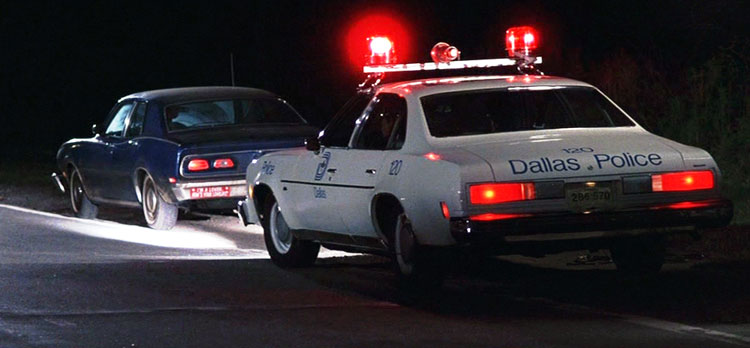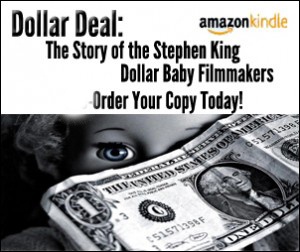The newest, trendiest thing in entertainment seems to be true crime documentary series. Just as Serial – the true crime podcast that captured the country’s rapt attention – finished its first season, HBO premiered the six part miniseries The Jinx about Robert Durst, the disappearance of his wife, and various related murders. While these two series were popular enough with general audiences, earning top ratings and obsessive fans, the arrest of Robert Durst following the finale of The Jinx put audiences into a frenzy (even though authorities say the series had nothing to do with the arrest). The success of these two series is bound to cause a wave of copy-cat projects, cashing in on the newfound popularity of the true crime genre. But if you need a fix between now and the next big show, here’s a list of some classic documentaries that either chronicle the fight for justice or had a major hand in delivering it.
The Thin Blue Line
While Errol Morris has had an incredibly varied career full of eclectic and interesting documentary subjects, The Thin Blue Line (1988) – one of his first feature documentaries – is the one for which he is likely to be known best. He systematically goes about investigating and debunking the case against a man incarcerated for the murder of a policeman. In the end, the evidence he uncovered through the film lead to the reopening of the case and the subsequent exoneration of the man previously convicted of the crime. While this turn of events may seen fantastical, Morris himself finds the conclusion to be rather improbable, claiming he’ll never be that lucky again.
https://youtu.be/SXBFt0b7nB0
Gimme Shelter
Considering Gimme Shelter starts out as a documentary about The Rolling Stones and their disastrous music festival you would hardly expect it to be important from a social justice standpoint. However, part of the reason this festival was so disastrous was that The Rolling Stones hired the Hells Angels – a group then notoriously against hippies – as security for what was meant to be a Woodstock-like event. Among other catastrophes, a young man named Meredith Hunter was killed by Hells Angel Alan Passaro. Due to the presence of the camera crew there to film the documentary, it could clearly be seen that Hunter pulled a gun before being subdued by Passaro, therefore proving that the death was in self-defense.
Harlan County, USA
This Barbara Kopple film is a classic of social justice filmmaking, not only chronicling the struggling strikers of the Harlan County Mine, but capturing their culture and humanity, and inevitably getting involved in the fight. It is incredible to see the way these people are forced to live because of the pay and conditions in which they are forced to work, with little to no help from their current union. Kopple took up the fight, raising funds for the strike through screenings of the film, and becoming a trusted friend of the strikers. It is thought, even as the strike eventually culminated in violence and the death of a striker, that Kopple’s presence with her camera ultimately prevented more violence against the strikers, and that her documentary helped gain awareness and support for the striker’s cause.
https://youtu.be/UgiMGOYVVFM
Titicut Follies
Frederick Wiseman is one of the pioneers of the direct cinema movement in the US, a style of documentary filmmaking that promotes simple, uninvolved observation of the subject with the least interference possible, allowing the subject to speak for itself. Wiseman himself dislikes this description of his style, feeling that it doesn’t give justice to his process of filmmaking. Regardless, this genre of filmmaking generally applies to the style in which Titicut Follies was filmed, with Wiseman as a fly on the wall of the Bridgewater State Hospital for the criminally insane. The film captured major mistreatment of the patients there by the staff and the poor conditions in which they were kept. The film underwent a lengthy legal battle after it had been censored due to privacy and dignity concerns related to the patients. For years the film was only available for educational purposes for people in the mental health and medical industries, but still managed to influence the improvement of conditions and treatment at mental hospitals all over the country.
An Inconvenient Truth
Most of us now accept that climate change is a real thing and that it has human causes. There will likely always be deniers, as there are about anything, but the fact that this scientific issue has such awareness today can be partly attributed to An Inconvenient Truth – which is basically the film version of Al Gore’s famous informational slide show on global warming. The film was widely popular and critically acclaimed, winning Academy Awards and becoming one of the highest grossing documentary films in the US. It is now even included as required viewing in many science classes.
The Case Against 8
This documentary tells the story of the fight against Proposition 8 – the ban on same-sex marriage – in California and the two couples who stood up as representatives of same-sex relationships and the LGBT community in the ensuing court battle. The film is by turns heartbreaking, heartwarming, triumphant, and funny as you follow not only the complicated legal struggle but the journey of these four people and the public scrutiny they were put through just to get married. The journey is worth it, though, to see the moment when those two couples are finally united in matrimony – not only finally allowed to fully express their love for each other, but finally granted the basic human rights to which they are entitled.






